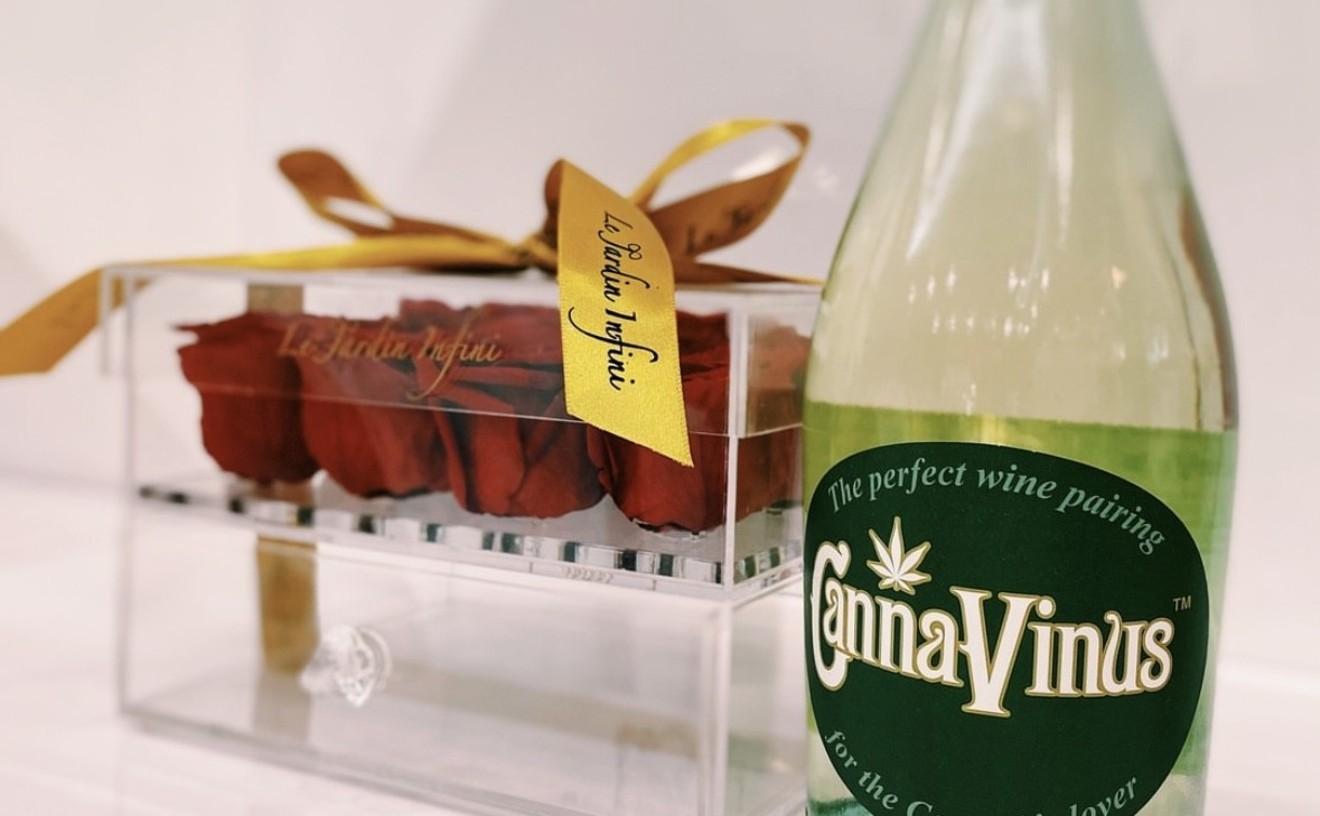They were wrong. In this case, I was hardly bothered. For one thing, the vegetable -- sautéed leaf spinach on this night -- was so fresh that it practically glowed with health, and the mashed potatoes topping it were functionally appropriate for creating a timbale form and deliciously filling.
For another, while I might have expected a more modern approach from the restaurant's precursor, a nouvelle Mexican pioneer called La Palma Grill, that's just not the vibe at Maison Carlos. Instead, the restaurant proudly proclaims that it features Continental cuisine -- about two-thirds Italian and one-third French.
Indeed, Maison Carlos, owned by husband-wife team Carlos and Lanie Farias, is in some ways about European formalities; it provides the kind of stylized dining that has been a long time coming to this culinary row, where upscale eateries have been rare. Maitre d' Carlos Farias hails from the revered Renato's in Palm Beach, and his executive chef, Robert Dedrick, calls the equally respected Nando's in Palm Beach his former maison. As a result of their joint experience and what obviously is a shared passion for exacting standards, the dining experience at Maison Carlos is less about following current trends than about firming up its footing with quality fare and genteel service.
The service, depending upon the number of parties dining and the amount of waiters working, can be as slow as a tugboat hauling a cruise ship. We were seated for at least 30 minutes before our appetizer order was even taken, and aside from a busboy or two, our server seemed to be the only one working the room. In the beginning, he was so distracted that he greeted us and told us the specials twice, though we chose not to correct him because the dishes sounded good enough to bear repeating. But he was unfailingly polite and impeccably mannered, with a no-questions-asked policy that was a relief from waiters who query patrons' judgments. He even took back an "off" bottle of wine without an argument.
The attractive trappings of the long, narrow dining room sum up the contained joie de vivre here nearly perfectly. Under a two-story ceiling, extra-large banquettes along one wall are juxtaposed by a bar along the other. Tables are shaded by canvas umbrellas that give diners the impression of dining on a patio somewhere in southern Europe, an outdoorsy feel that is helped along by a cool tile floor, clean white columns, and vivid potted greenery.
Which is not to imply that the fare at Maison Carlos is staid or boring. Little touches enliven familiar appetizers; for instance, the tender fried calamari is served with a vibrant aioli that includes pungent black olives. In addition, a daily list of specials offers some intriguing options: We gleaned an impeccably prepared beet carpaccio, shaved red and golden beets dotted with goat cheese and arugula tossed in a lemon vinaigrette, and a sumptuous dish of tagliatelle stirred with a woodsy sauce of wild mushrooms and succulent prawns.
For the most part, however, the bill of fare is classic. Meals begin with complimentary bruschetta and a basket of warm bread, and patrons may choose to continue that hominess with a starter of French onion soup. Tasting like slow-simmered stock rather than instant bouillon and tightly packed with mildly seasoned caramelized onions, the soup was an excellent version rarely found in South Florida.
Oddly, though, the menu describes some appetizers and main courses in French (homard lanie; filet de boeuf), others in Italian (zuppa del giorno; scaloppini di vitello alla pozzaiola) and the remainder in English (spaghetti with jumbo lump crab meat; grilled French-cut chicken breast). Why huitres au Rockefeller is referred to as such instead of plain ol' oysters Rockefeller is inexplicable; yes, its inventor was Bernard Guste, chef at Antoine's in New Orleans, but the dish was named for the original entrepreneur, American John D. Rockefeller (because it's so rich). Plus, Maison Carlos' version adds bacon and Hollandaise sauce to the oyster stuffing, two ingredients that Guste didn't use. A fine point, perhaps. In the end, use whatever language you want. These plump oysters were still delicious, densely packed with creamy chopped spinach (folks also argue over whether the original version contained spinach, green onions, or watercress), though they could have gained some necessary heat from a few more minutes under the broiler.
On the other hand, some dishes benefited from conservative cooking times. A main course of coquille St. Jacques à la Dijon was simply outstanding, with a half-dozen toothsome sea scallops so wonderfully supple and satiating that I couldn't finish them. This is another of those recipes that lends itself to interpretation. I've seen coquille St. Jacques prepared in a variety of ways ranging from a potato-based casserole to a cream-laden gratinée. But I'd have to say that Chef Dedrick's version is among the best. Wisely, he allows the enormous sea scallops to shine, sautéing them briefly and moistening them with a light, buttery mustard sauce.
Dedrick also shows a professionally restrained hand with steak au poivre, allowing just the right amount of green peppercorns to rev up a mustard-brandy demi-glace. The sirloin, a 14-ounce New York strip, was crusted with black peppercorns but not so many that you could taste only spice instead of beef. Masterful. In fact, the only dish we felt fell short all evening was probably not the head chef's fault. Medallions of veal Marsala had actually been pounded too thinly, resulting in a loss of both moisture and texture, but prepping scallops of meat usually falls to a kitchen underling.
Besides, it's easy to forgive anything when a crock of crème brûlée, lidded with a pane of caramelized sugar, is available to finish off a class act of a meal in an equally traditional manner. The maison might belong to Carlos, but his domicile is a welcome haven for the culinary homeless, myself included, who used to wander around Clematis.










